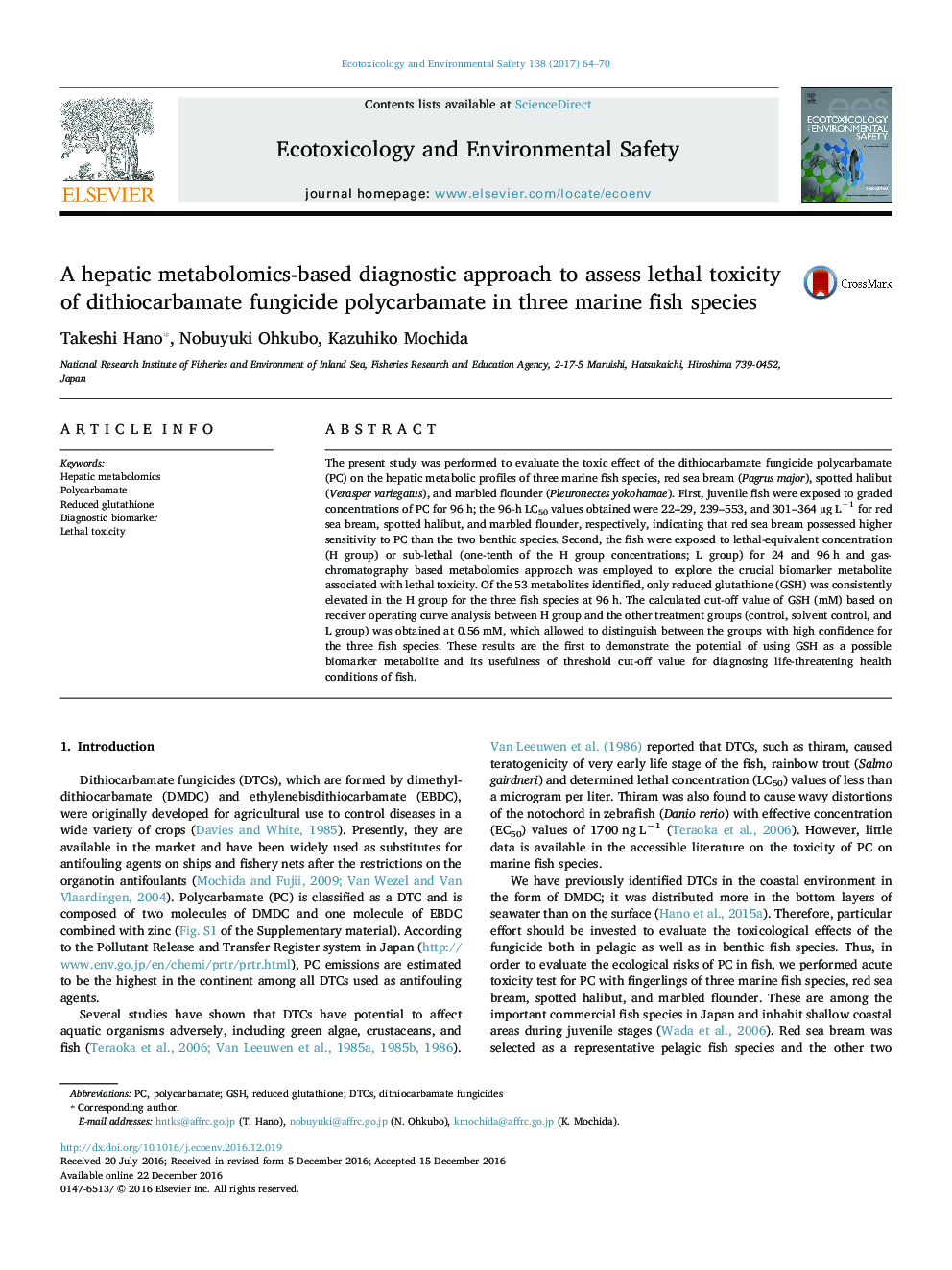| کد مقاله | کد نشریه | سال انتشار | مقاله انگلیسی | نسخه تمام متن |
|---|---|---|---|---|
| 5747941 | 1618926 | 2017 | 7 صفحه PDF | دانلود رایگان |
- Polycarbamate (PC) exhibited lethal toxicity in three marine fish species.
- PC caused perturbation of hepatic metabolite profile.
- Elevation of reduced glutathione (GSH) was associated with lethal toxicity.
- Use of GSH cut-off values can assess the life-threatening condition of fish.
The present study was performed to evaluate the toxic effect of the dithiocarbamate fungicide polycarbamate (PC) on the hepatic metabolic profiles of three marine fish species, red sea bream (Pagrus major), spotted halibut (Verasper variegatus), and marbled flounder (Pleuronectes yokohamae). First, juvenile fish were exposed to graded concentrations of PC for 96 h; the 96-h LC50 values obtained were 22-29, 239-553, and 301-364 µg Lâ1 for red sea bream, spotted halibut, and marbled flounder, respectively, indicating that red sea bream possessed higher sensitivity to PC than the two benthic species. Second, the fish were exposed to lethal-equivalent concentration (H group) or sub-lethal (one-tenth of the H group concentrations; L group) for 24 and 96 h and gas-chromatography based metabolomics approach was employed to explore the crucial biomarker metabolite associated with lethal toxicity. Of the 53 metabolites identified, only reduced glutathione (GSH) was consistently elevated in the H group for the three fish species at 96 h. The calculated cut-off value of GSH (mM) based on receiver operating curve analysis between H group and the other treatment groups (control, solvent control, and L group) was obtained at 0.56 mM, which allowed to distinguish between the groups with high confidence for the three fish species. These results are the first to demonstrate the potential of using GSH as a possible biomarker metabolite and its usefulness of threshold cut-off value for diagnosing life-threatening health conditions of fish.
194
Journal: Ecotoxicology and Environmental Safety - Volume 138, April 2017, Pages 64-70
